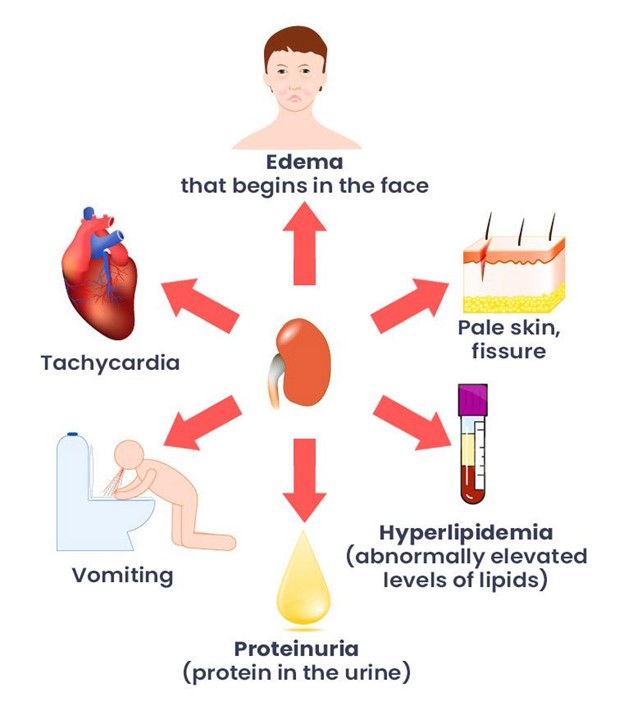A nurse is caring for a child who has a suspected diagnosis of bacterial meningitis. Which of the following actions is the nurse's priority?
Document intake and output.
Administer antibiotics when available
Reduce environmental stimuli
Maintain seizure precaution
The Correct Answer is B
A) Document intake and output:
Documenting intake and output is an important nursing task, but it is not the top priority in a suspected case of bacterial meningitis. Timely administration of antibiotics to treat the infection takes precedence over documentation of intake and output.
B) Administer antibiotics when available.
Explanation:
Bacterial meningitis is a serious and potentially life-threatening infection of the membranes covering the brain and spinal cord. Rapid administration of antibiotics is crucial to effectively treat the infection and prevent its spread. Delay in antibiotic administration can lead to worsening symptoms and complications. Therefore, getting the appropriate antibiotics to the child as soon as they are available is the nurse's priority.
C) Reduce environmental stimuli:
Reducing environmental stimuli can be helpful in managing symptoms and providing comfort to the child with meningitis, but it is not the priority action. The immediate concern in a suspected case of bacterial meningitis is to treat the infection.
D) Maintain seizure precaution:
While maintaining seizure precautions is important, especially if the child has a history of seizures, it is not the top priority in a suspected case of bacterial meningitis. Administering antibiotics to treat the infection and prevent its progression is the primary concern.
Nursing Test Bank
Naxlex Comprehensive Predictor Exams
Related Questions
Correct Answer is A
Explanation
A. "I will continue to check his blood sugar two times every day."
Correct Explanation: This statement indicates a need for further instruction.
Explanation: A child with type 1 diabetes requires frequent blood sugar monitoring, especially during illness. Checking blood sugar only twice a day is not sufficient, especially when the child has an upper respiratory infection. Illness can impact blood sugar levels, so more frequent monitoring is necessary to ensure proper diabetes management.
B. "I will report a change in her breathing or any signs of confusion."
Incorrect Explanation: This statement shows awareness of potential complications and the need to monitor for them.
Explanation: Children with type 1 diabetes are at risk of diabetic ketoacidosis (DKA) when they are sick. Changes in breathing patterns and signs of confusion are symptoms of DKA. Reporting these symptoms is important, as it could indicate a serious diabetic complication.
C. "I will encourage her to drink half a cup of water or sugar-free fluid every 30 minutes."
Incorrect Explanation: This statement demonstrates proper fluid management, especially during illness.
Explanation: Encouraging the child to stay hydrated with sugar-free fluids is essential, particularly when the child has an upper respiratory infection. Proper hydration helps prevent dehydration, which can be more concerning for a child with diabetes.
D. "I will notify the doctor if her temperature is not controlled by acetaminophen."
Incorrect Explanation: This statement shows an understanding of the importance of managing fever in a child with diabetes.
Explanation: Children with diabetes can experience difficulty managing blood sugar levels when they're sick. Fever can exacerbate this issue. Using acetaminophen to control fever is appropriate, and notifying the doctor if fever persists is a responsible action.
Correct Answer is C
Explanation
A) Smokey brown urine:
This finding is not typically associated with nephrotic syndrome. Smokey brown urine might indicate the presence of blood in the urine, which can be seen in conditions such as hematuria or certain kidney infections.
B) Polyuria:
Polyuria refers to excessive urination and is not a primary characteristic of nephrotic syndrome. However, children with nephrotic syndrome may have decreased urine output due to the loss of fluid and proteins through the damaged kidney filters.
C) Facial edema:
Facial edema (swelling of the face) is a hallmark of nephrotic syndrome. The loss of albumin in the urine results in a decrease in oncotic pressure (a force that helps keep fluid in the blood vessels), leading to fluid accumulation in the interstitial spaces, including the face, ankles, and abdomen.
D) Hypertension:
Hypertension (high blood pressure) is not a typical finding of nephrotic syndrome itself. However, it's possible for kidney damage to lead to secondary hypertension. In nephrotic syndrome, low levels of albumin can trigger the renin-angiotensin-aldosterone system, which can contribute to increased blood pressure.

Whether you are a student looking to ace your exams or a practicing nurse seeking to enhance your expertise , our nursing education contents will empower you with the confidence and competence to make a difference in the lives of patients and become a respected leader in the healthcare field.
Visit Naxlex, invest in your future and unlock endless possibilities with our unparalleled nursing education contents today
Report Wrong Answer on the Current Question
Do you disagree with the answer? If yes, what is your expected answer? Explain.
Kindly be descriptive with the issue you are facing.
